Art Fairs
Strong, Fast Sales at Art Cologne Mark New High Point For German Art Fair
More than ever, Germany's top fair is back in swing.
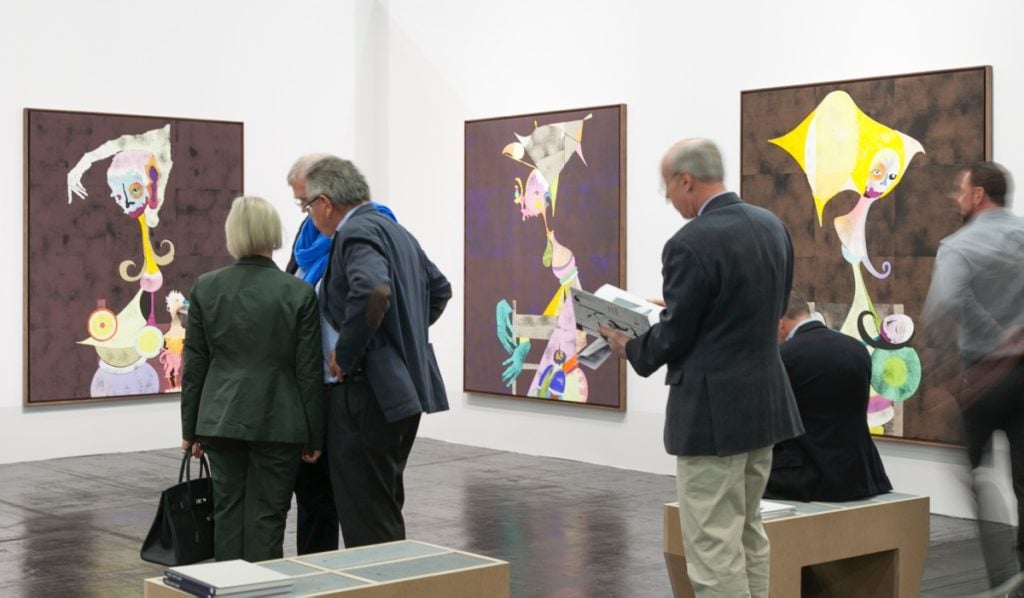
More than ever, Germany's top fair is back in swing.

Alexander Forbes

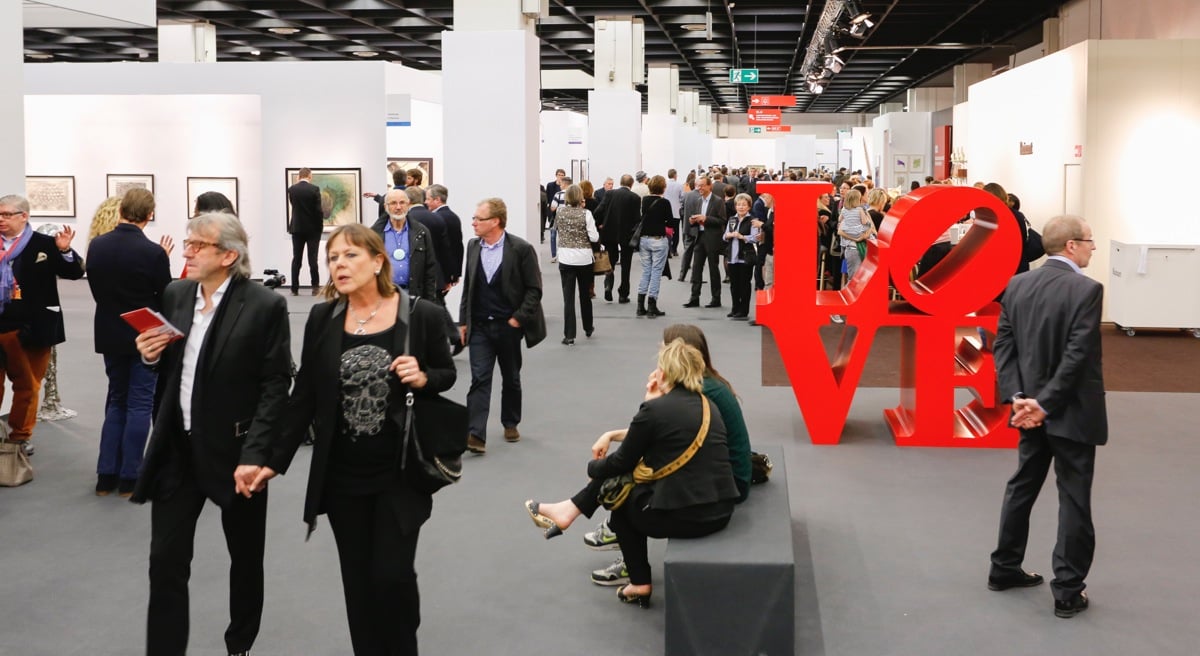
Art Cologne 2014
Photo: Courtesy Koelnmesse.
A hulking pair of Joel Shapiro sculptures flanks the entryway to Art Cologne’s 48th edition. Pristine examples of his Elevation series from 1996, minimal and of a grey that nearly disappears against intermittently overcast skies they set the tone for the fair overall. Subtlety and quality, and not flash, proves paramount across the fair this year. It’s a place for connoisseurs, not those looking for a shiny statement piece.
Art Cologne requires a slower gait and more patient eye than its brethren. But then, that’s already the style of the assembled (mostly European) collectors that fair director Daniel Hug has been on a mission to attract back over the past six years. “We needed a good German fair and we have that now,” one prominent Rhineland gallerist told artnet News. Many more echoed the sentiment during Art Cologne’s first two days.
Lack of flash may separate the fair. But at this year’s vernissage, the bustling halls could well have been those of Armory, Frieze, or Basel. Dealers were inundated with collectors, sometimes lined up to get a word (or offer) in edgewise. Sales were swift. That’s all glad news.
On another level, though, Art Cologne remains a regional affair, attracting deep-pocketed buyers from the Rhineland, Germany’s south, and the Benelux countries. Anita Zabludovicz from London was present and buying. Americans also held a presence at the fair, highlighted by the return of Don and Mera Rubell as well as Michael and Susan Hort.
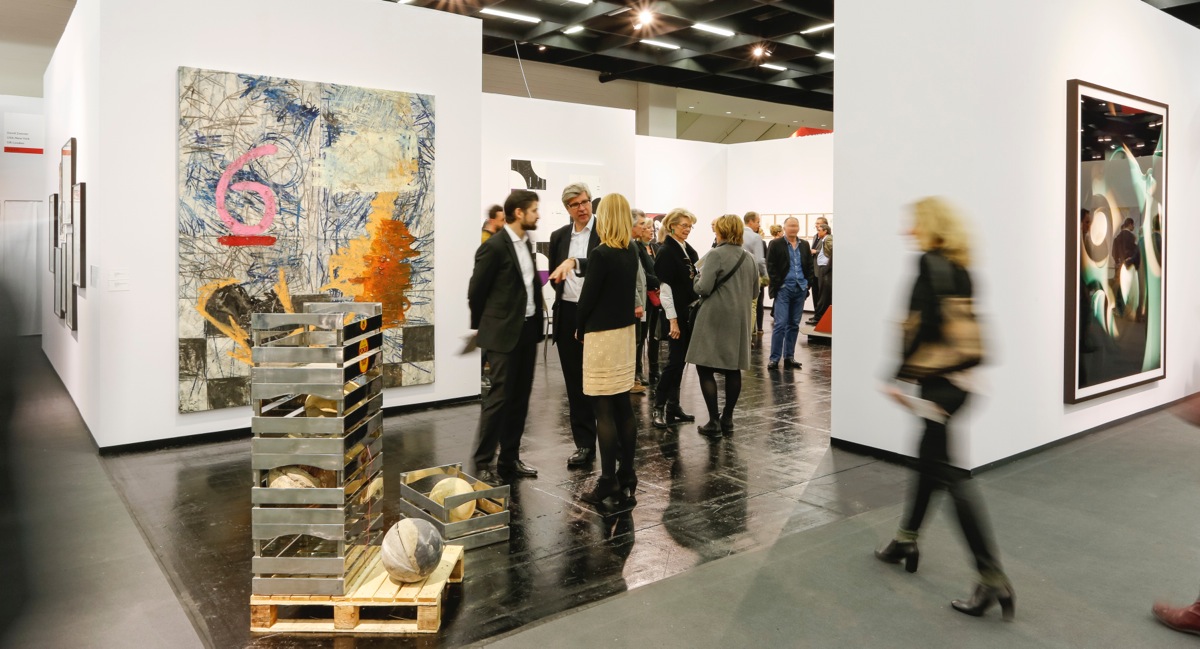
David Zwirner’s Booth at Art Cologne 2014
Photo: Courtesy Koelnmesse.
On the first floor, home to established galleries peddling mostly blue chip contemporary or secondary market work, energy was steady throughout the first day, with a slight calm setting in on Thursday before the Belgians were set to arrive in hordes over the weekend—school holidays kept some of the country’s prominent purchasers at bay during the preview.
David Zwirner once again outperformed the competition. Two works by current art world darling Oscar Murillo—one painting and a sculpture from his A Mercantile Novel series, which will premiere in New York on April 24th—were first to be nabbed by collectors. A series of ten drawings on hotel stationary by Martin Kippenberger, collages by Marcel Dzama, photos by James Welling also sold during the preview. By Thursday evening, a large photogram by Thomas Ruff was also sold. And sales of works by Michael Riedel and Christopher Williams that had been put on reserve the previous day also went through.
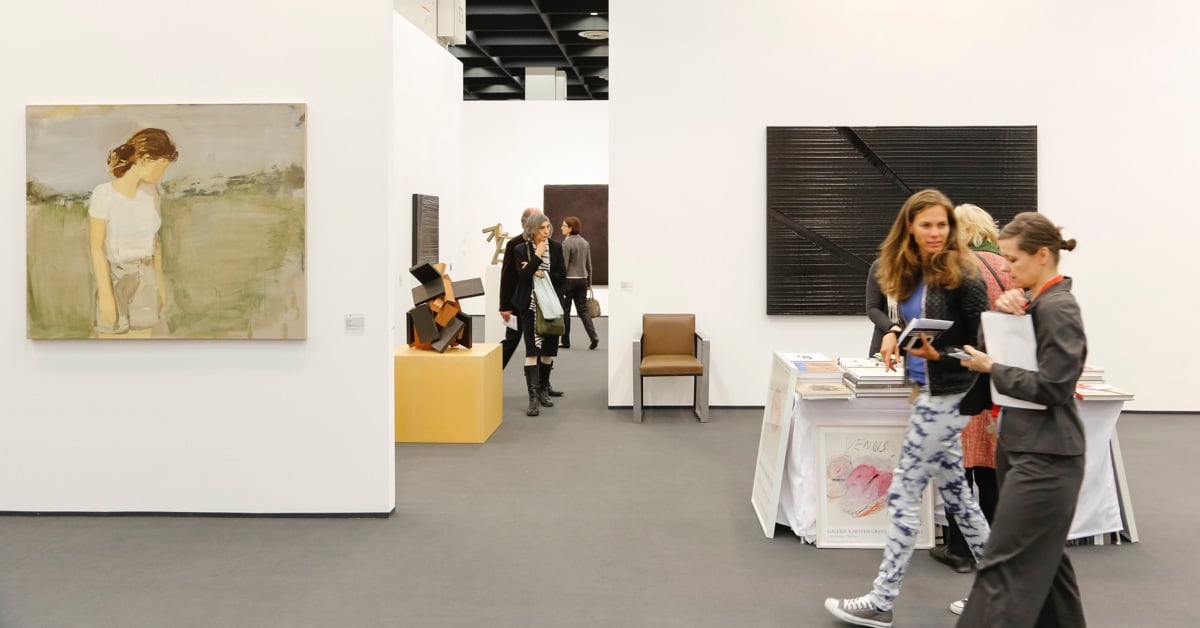
Galerie Karsten Greve’s Booth at Art Cologne 2014
Courtesy Koelnmesse
Adjacent to Zwirner, German mega-collector Ingvild Goetz could be seen chatting with Karsten Greve. The dealer had two exceptional works by Pierre Soulages, ahead of the opening of the 94-year-old artist’s Musée Soulages in his birth town of Roudez in southern France. Three paintings by recently deceased painter Gotthard Graubner also attracted interest. (Dierking, Sundheimer was also showing one of the artist’s largest works.)
At Milan’s Cardi Gallery, owner Nicolò Cardi was beaming after a successful return to Art Cologne after years away from the fair. “Art Cologne is such a strong, good quality fair,” he said, explaining that their return was due to, “the extraordinary work the new director is doing.” Within the fair’s first hours Cardi sold a Jannis Kounellis piece from the 1980s for which he was asking €100,000. He had further works by Michelangelo Pistoletto and Giuseppe Penone on hold with confidence they would sell by fair’s end.
Many of the first floor’s other galleries reported strong sales. Most galleries reported selling small paintings or works on paper but were holding out for the weekend for more significant results and confirmations on early holds. Art Cologne is notorious for its collectors’ reticence to pull the trigger on high priced pieces.
Upstairs, sales for contemporary and emerging galleries were slightly slower at the fair’s start but soon overtook their more established colleagues. At least in volume, that is. A layout change is potentially to blame. For the previous two years the New Art Dealers Alliance (NADA) had a separate section of the fair. For visitors, that allowed a partial compartmentalization of the already smaller and more numerous booths on the second floor. But for the NADA dealers, it meant sluggish sales at best. This year, the NADA galleries who chose to return have formed the Collaborations section, along with others from Art Cologne proper. It’s a great opportunity for galleries to show more ambitious or experimental work.
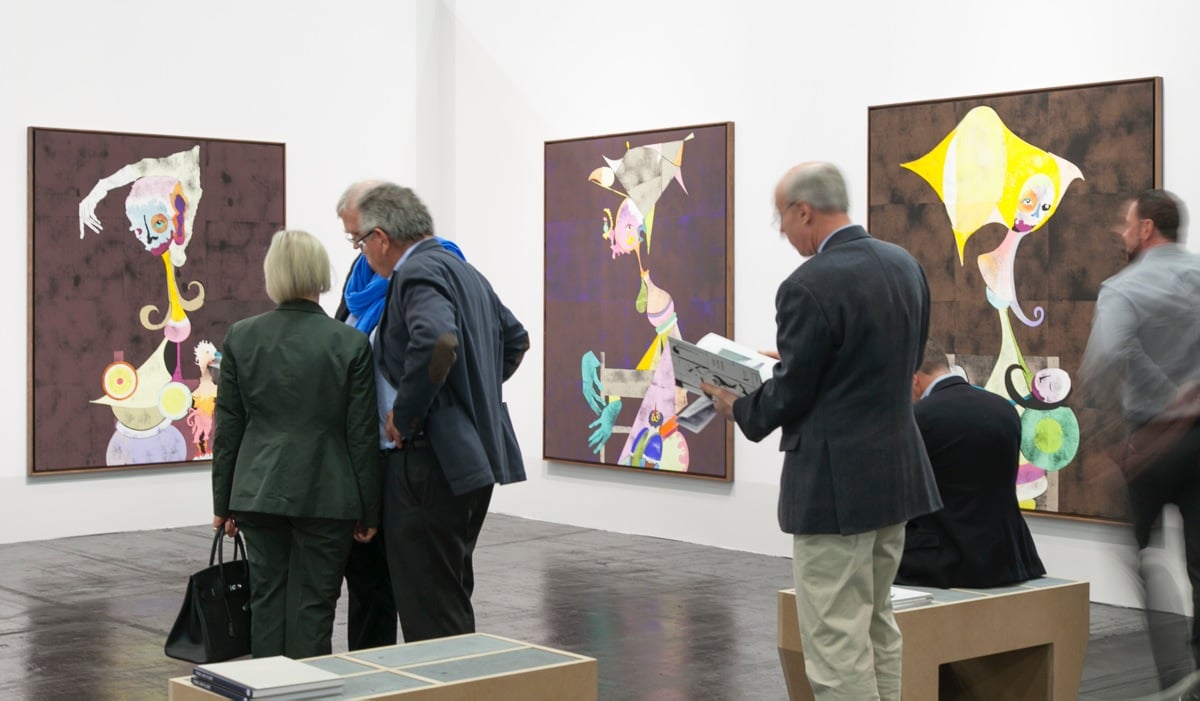
Contemporary Fine Art’s Booth Booth of Gert and Uwe Tobias at Art Cologne 2014
Photo: Courtesy Koelnmesse.
Overall, the quality of work this year far outshined that of Art Cologne’s 2013 edition. That’s partly due to some key additions. Contemporary Fine Arts (CFA) is back in Cologne after over ten years and has the fair’s most audacious presentation: two full 50 square meter booths showing solo presentations of Tal R and Gert and Uwe Tobias. Two Tal R works sold within the first hour for €33,000-54,000. Several more were on hold. Four of the Tobias twins’ works had also sold by Thursday afternoon for €38,000 each.
London and Berlin’s Sprüth Magers was inundated with collectors during the vernissage. A large Sterling Ruby sculpture topped their balance sheet by Thursday afternoon, having sold to a German collector for $150,000. A large wall sculpture by Cologne-based artist Michail Pirgelis sold for €40,000. A painting from their recent Berlin exhibition of Andreas Schulze and “a lot of works from storage” rounded out a solid performance.
In their second year at the fair, Peres Projects moved from the fair’s perimeter to a much larger stand in the heart of the second floor. The gallery had placed two paintings from David Ostrowski’s F series with prominent collectors from the Rhineland. Peres still sells the works at €10,000-25,000 despite a comparable painting’s recent sale at Phillips for £86,500 and has been extremely attentive to which collectors are purchasing the work. A mirror painting by Eddie Peake had also sold by Thursday afternoon. Two prime examples of Dorothy Iannone’s work from the 1960s were viewer favorites and had attracted serious institutional interest. Iannone currently enjoys a major retrospective at the Berlinische Galerie. The works were priced in the realm of €65,000.

Sprüth Magers’s Booth at Art Cologne 2014
Photo: Courtesy Koelnmesse.
In terms of sheer sales volume, Johann Koenig was unmatched. In the first day alone, the gallery sold over 30 works from nearly every artist on their booth and several whose work they hadn’t even brought to the fair. “It was a bit like [Art] Basel,” Koenig said of the preview and vernissage. He sold to major institutions like Munich’s recently reopened Lenbachhaus and Christian Boros among other prominent and “mostly German,” collectors. Interest was heaviest in Berlin-based artist Alicja Kwade, a Boros favorite. Others included a large, bench sculpture by Jeppe Hein, paintings by Katharina Grosse, and a sculpture by Tatiana Trouvé.
Perhaps most surprisingly, success befell young galleries with unprecedented pace this year. The region typically demonstrates conservative buying habits. And previous editions of Art Cologne were marked by a tense air at the second floor’s perimeter—the location of New Contemporaries, Hug’s section for galleries under ten years old.
Smiles replaced those furrowed brows this time around. Nearly all galleries asked had sold something by Thursday afternoon.
Berlin’s Klemms had a strong first day, selling several drawings for €500 a piece. Two large photographs by Adrian Sauer sold. One painting by Bernard Piffaretti had sold by Thursday afternoon for €14,000 with another on reserve. Stopping to catch his breath near the end of Wednesday’s vernissage, Sebastian Klemm noted how essential Art Cologne was to his ability to survive the crisis years and Berlin’s still-sluggish market.
Soy Capitán’s Heike Tosun said she was slightly nervous for this year’s fair, after deciding to bring only one of the artists that had seen a flood of sales hit her booth in 2013. Fears were quickly averted. Tosun had sold four paintings by Henning Strassburger and Matthias Dornfeld priced between €6,000-10,000 each by Thursday afternoon. “I even sold something at the party!” she exclaimed, referring to a post-vernissage fete thrown by a group of young galleries on Wednesday night.
To an extent, the increase in sales at the young galleries is also structural. Collectors apparently were scared to even talk to a gallerist about an unknown artist when Hug took over the fair in 2008. “They thought that they would be obligated to buy,” he says. Clearly, they have no more fears.